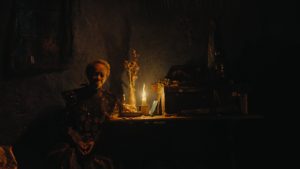You may buy an individual ticket or a Series Pass HERE
Sponsored by VTIFF Board members Ryan Chartier and Lorna-Kay Peal
“In a phone interview before the festival, Mosese told me that this Gothic premise has its roots in reality. As part of the “Highlands Water Project” conceived under apartheid, Lesotho exports 780 million cubic metres of drinking water every year to South Africa. This entails the construction of reservoirs that force villagers out of their homes and into urban centres. They leave behind their land, crops, and livestock, and must either exhume their dead or abandon them to the flooding. Mosese recounted shaking hands with Nelson Mandela as a boy when the South African president visited Lesotho to inaugurate a dam, and realizing later the irony of this “lauded knight of democracy,” as he described Mandela, coming to his country to continue the imperialist water project.
[…] There is something pristine about the visuals in This Is Not a Burial. Although the process of making the film in the remote mountainous village of Ha Dinizulu was fraught—there was limited electricity and water, and equipment had to be brought in from South Africa on horseback and mules—the landscape and its vibrant flora make for ethereally vivid tableaux in the film, as do the traditional blankets and shawls of Lesotho (a country whose striking colors and designs inspired some of the costuming in Ryan Coogler’s Black Panther). Surprisingly, for Mosese, the beauty of the location was a cause of concern. “The curse of shooting in Africa, because it is so beautiful, is that you can end up pigeonholing yourself within beauty. I don’t want the conversation to end in beauty,” he said. “That’s why I chose the 4:3 [Academy] ratio, because otherwise the movie would be way too beautiful and that would overshadow the story. So I showed as little as I could.” ~ Dvika Girish, Film Comment


